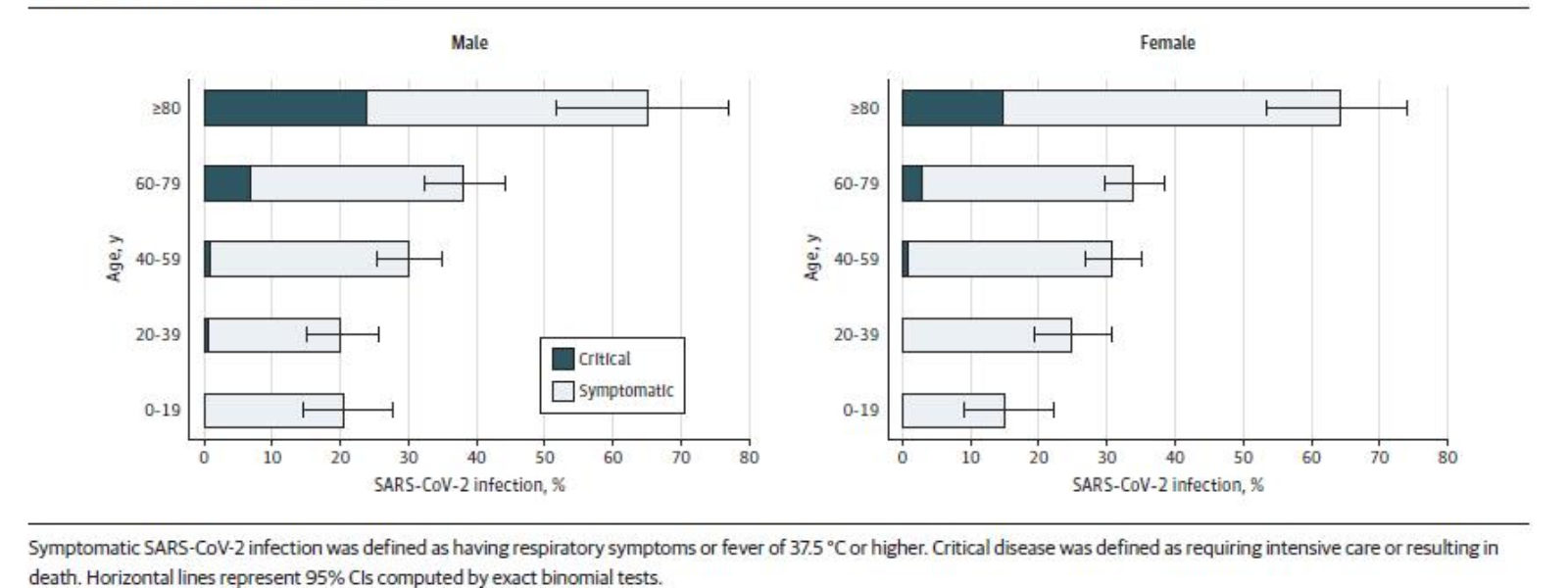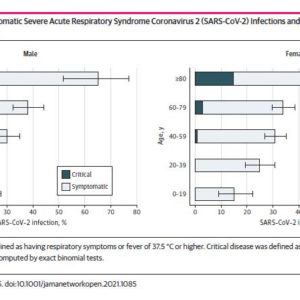The risk of developing symptoms after Sars-CoV-2 infection

What is the likelihood of developing symptoms and progressing to critical conditions after contracting the coronavirus infection? New FBK epidemiological study published in the scientific journal JAMA Network Open
A new epidemiological study by Trento-based Fondazione Bruno Kessler, published in the scientific journal JAMA Network Open, defined the rates for the onset of respiratory symptoms and fever ≥37.5 ° C in conection to SARS-CoV-2 infection depending on age and sex.
The study – whose first author is Piero Poletti from FBK’s Health Emergencies research center led by Stefano Merler – also provides estimates on the probability of developing critical symptoms after the infection such as to require hospitalization in intensive care or lead to the patient’s death
The innovative contribution of this study lies in the fact that the estimates were obtained from a representative sample of infections, including only individuals from contact clusters in which all of them had been tested, either via molecular swab test or via serological screening.
The researchers analyzed a cohort of 5.484 individuals identified and quarantined during the contact tracing operations that took place between February and April 2020 in Lombardy. All contacts were monitored daily for onset of symptoms (min. 14 days after exposure to the virus) and for any severe clinical outcomes (min. 1 month).
Robust estimates regarding the risk of developing symptoms or critical illness in individuals infected with SARS-CoV-2 are critical for correctly interpreting the observed epidemic dynamics and for identifying the places and age groups where transmission can more easily fail to be detected.
Infections that developed symptoms ranged from a rate of 18% among participants under the age of 20 to 65% of those aged 80 or older. Only 26% of infected individuals under 60 developed symptoms or a fever ≥37.5° C. 6.6% of infected individuals over 60 developed critical illness. The risk of critical illness was 53% lower in women than in men.
The extremely low fraction of children and young adults who develop symptoms points out the difficulties in identifying infections at an early stage and controlling potential outbreaks in a symptom notification-based surveillance system.
The work is the result of research carried out in collaboration with the Directorate General of Health of the Lombardy Region, the Department of Biomedical Sciences for Health in Milan, Bocconi University and the Indiana University School of Public Health in Bloomington.
